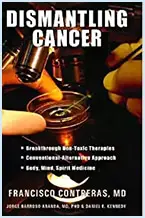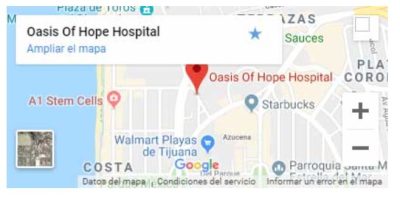Hyperthermia Cancer Therapy
at Oasis of Hope
The Place for Alternative Cancer Treatment
Cancerous tissues are very susceptible. Heat can destroy cell membranes, effectively killing the cell. Heat also changes tumors’ microenvironment, making them more vulnerable to agents like chemo, radiation, or even vitamin C.
Hyperthermia—significant elevation of body temp—also can cause havoc, causing proteins to break down and harming cell membranes, which are proteins, to the point of melting. Damaged membranes have an impaired capacity to control permeability; things that should stay out of the cell will come in, and things that should be in will come out. This can cause cell death leading to organ insufficiency and eventually death. To prevent this, the hypothalamus instructs our body to lose temperature by the following mechanisms:
- Vasodilation (to increase circulation, which works as a cooler)
- Increased sweat production (to evaporate some of the heat)
- Reduced production of norepinephrine, epinephrine, and thyroxine (to reduce heat production).
Taking all of this into consideration, let’s explore how heat can destroy cancer cells and leave normal cells undamaged. The Coley’s-fever therapy experiences verified that this is so, but what we want to know is the degree to which hyperthermia therapies are effective and practical.
How Heat Can Kill Cancer
Cancer cells are more sensitive to heat than normal cells. We can exploit this fact to selectively kill malignant cells without, or at least with limited damage to, healthy cells and realize the true potential of hyperthermia as a therapy to destroy tumors.
However, the notion that healthy cells withstand heat better than malignant cells is incorrect. Again, heat denatures proteins; cellular membranes of benign and malignant cells have the same proteins. In fact, lab tests in vitro show that normal and cancer cells have the same membrane responses to hyperthermia. So why are cancerous cells more susceptible to heat? Because their cooling system is deficient.
Tumor vasculature—vast but aberrant, irregular (heterogeneous), and disorganized—promotes an unfavorable microenvironment inside cancerous tumors (e.g., low oxygen, low pH). This protects cancer from effects of oxidative therapies like radiation and many chemo agents because oxygen is needed for such agents to oxidize the malignant cells. Abundant scientific evidence shows that heating animal and human cells to 40°C or 42°C (104°F–107.6°F, moderate hyperthermia) changes malignant cells’ microenvironment, making them vulnerable to direct apoptosis or conventional oxidative therapies.
While it’s exceedingly hard to uniformly increase tumor temperature with whole-body hyperthermia, especially with metastases in various organs, it’s relatively easy to raise the temp of single or regional tumors into the desired range.
Regional or local hyperthermia aims to increase the temp of the tumor’s area (or if possible the tumor itself) to kill it directly with heat or sensitize it to other anti-tumor agents without damaging surrounding tissue. Some devices for this use microwave, radio frequency, ultrasound energy, or magnetic hyperthermia; each has a different method to raise the temp of the area or tumor, from direct application to a surface tumor (superficial or deep-tissue hyperthermia) to the use of needles or probes (interstitial hyperthermia). To improve efficacy of chemo for peritoneal carcinomatosis, where the intestinal lining and the whole abdomen is cancer-riddled, the chemotherapy itself is heated and directly injected into the abdominal cavity during surgery or through a percutaneous catheter.
This is called hyperthermic peritoneal perfusion (CHPP) or hyperthermicintraperitoneal chemotherapy (HIPEC).
Because only a region or a tumor is the target, higher temps (under 44°C) can be achieved, in comparison to the under 42°C limit in whole-body treatment. Again, rise of temp and time of exposure are vital, but in this modality, there is practically no chance of severe side effects.
Radiofrequency Ablation is the most common hyperthermia utilized today, radiofrequency ablation (RFA), uses completely localized, very high temps.
The innovator Harry H. LeVeen strongly endorsed this method; he did research with superheated ultrasound waves in animals, eradicating tumors altogether without damaging surrounding tissue.
With RFA we can treat tumors that can’t be surgically removed due to location or poor health. RFA isn’t cheap, but it’s affordable compared to new drugs; it also can be an outpatient procedure and can be used in conjunction with radiation, chemo, surgery, and alternative agents.













